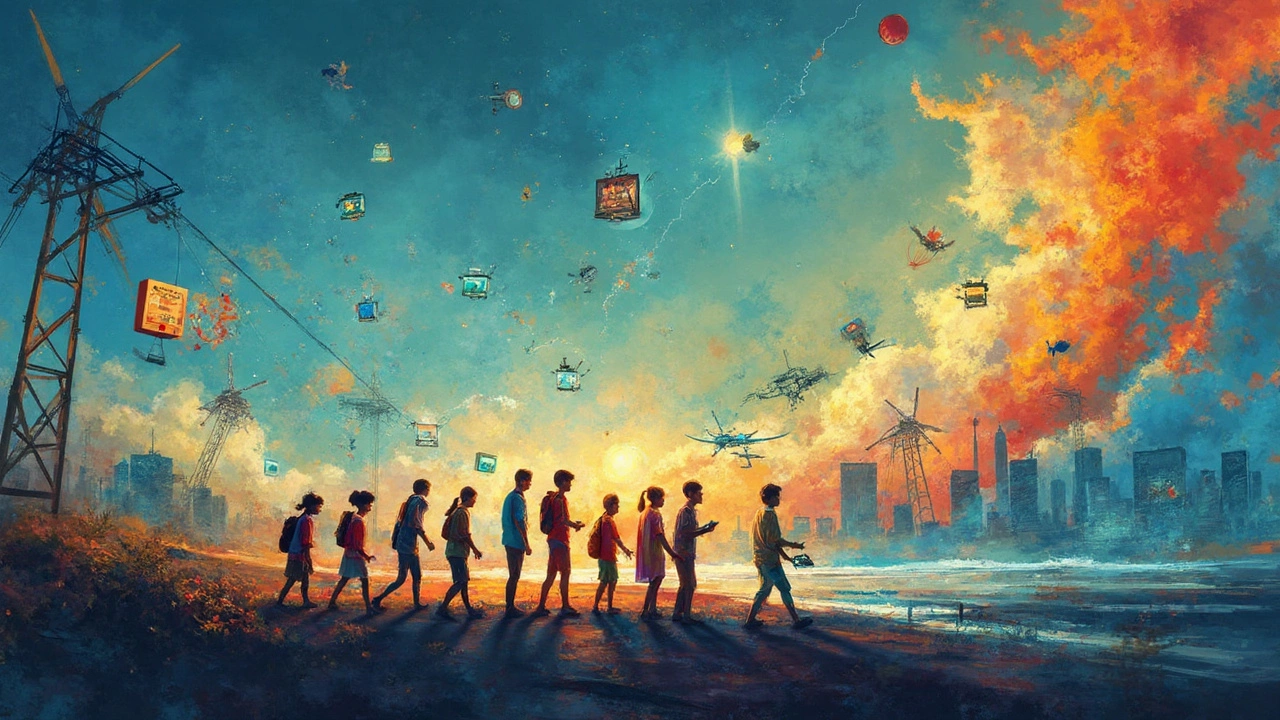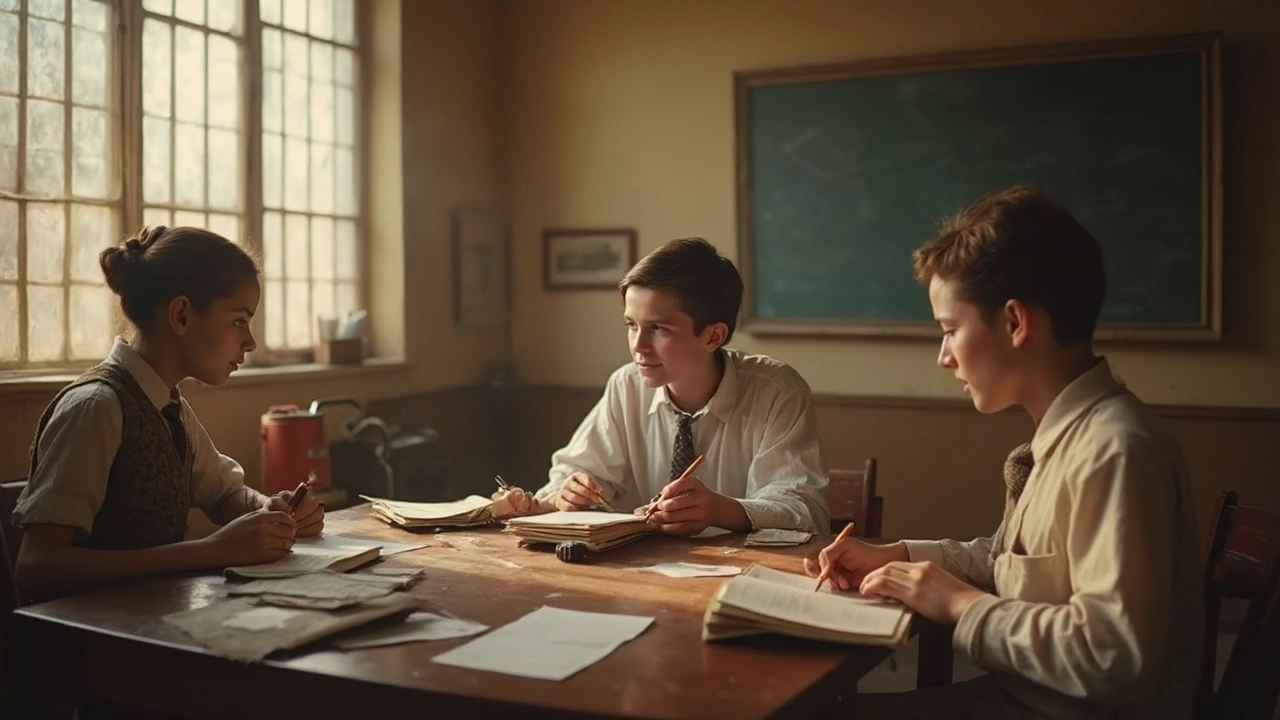Think distance learning is a brand-new thing? Surprise! It’s been around for way longer than many imagine, evolving over decades—from good old snail mail days to the tech-heavy landscape we have today. It all started in the 1800s when folks realized they could learn stuff through letters without stepping foot in a school.
Throw in some impressive tech advancements, and suddenly everyone could join in from anywhere, right? PCs, the internet, smartphones—the perfect storm that turned learning on its head. And, let’s not forget that wild time called the COVID-19 pandemic, which really cranked things into high gear.
If you've been itching to know how we got here and how to make the most out of distance learning today, you're in for a treat. From quirky beginnings to being an educational lifeline, we're diving into how distance learning transformed, and what it means for you and me.
- The Early Days
- Correspondence Courses
- The Impact of Technology
- The Rise of Online Platforms
- COVID-19 and the Boom
- Future of Distance Learning
The Early Days
Alright, let's rewind to when it all began. Distance learning might seem like a recent phenomenon, but its roots stretch back to the mid-19th century. Back then, no Wi-Fi, no laptops—just ink, paper, and a trusty postman. The earliest form kicked off with correspondence courses. In 1840, Sir Isaac Pitman in England initiated one of the first known distance learning programs, teaching shorthand by mailing lesson cards to eager students and receiving their completed assignments in return.
This was a game-changer for many who couldn't attend traditional schools due to geographical or financial barriers. Suddenly, knowledge became more accessible, and students could learn at their own pace. This method caught on, and by the late 19th and early 20th centuries, universities like the University of London were offering external degrees without having students step foot on campus.
The pieces were falling into place for what would eventually blossom into the world of modern distance learning. Even then, the idea was clear: education should not be limited by distance. These early practices set the stage for what was to come, proving that with a bit of creativity and some postage stamps, learning needn't be confined to a classroom. Who knew that looking back, we'd see these humble beginnings as the foundation of something as big as today's virtual classrooms?
Correspondence Courses
Way before we were Zooming or logging into online classrooms, distance learning made its debut through something called correspondence courses. Wild, right? This was how folks first learned without leaving home. It all kicked off in the mid-19th century when Sir Isaac Pitman thought to teach shorthand by mailing assignments back and forth. Sounds slow compared to today, but it was revolutionary back then!
By the late 1800s, universities started to jump on the bandwagon. The University of Chicago was one of the first in the U.S. to offer distance courses through mail. It's like they took their personal classrooms and sent them out in envelopes. Books, quizzes, even essays traveled over miles via postal services. It was a groundbreaking way to expand access to education.
"The tradition of correspondence education illustrates the adaptability of education to new situations and the continuous quest for broader access to learning." — Olive Taylor, Historian.
The charm of these courses? You could learn at your own pace. It's no wonder that by the early 20th century, hundreds of thousands of people were enrolled in such programs. Here's a little throwback detail: whole course catalogs were printed, similar to today’s online course lists.
| Year | Institution | Highlight |
|---|---|---|
| 1840s | Sir Isaac Pitman | First correspondence course |
| 1890s | University of Chicago | First major U.S. university offering distance learning |
So, why did correspondence courses fade out? Technology, basically. As soon as radio and then TV rolled around, these old-school courses were eclipsed. But their DNA lives on in today's remote education, showing how adaptable learning can be with the right tools.
The Impact of Technology
Alright, here’s where things get really interesting. Technology has been the rocket fuel for the expansion of distance learning. Back in the day, radio and television broadcasts were cutting-edge ways to reach students without a traditional classroom. Fast forward to now, and you have the internet opening floodgates of knowledge at lightning speed.
The big game-changer, of course, has been the internet. Remember when chat rooms were all the rage? They were the precursor to today's super interactive virtual classrooms. The web made it possible for learning to happen in real time, bridging geographical gaps like never before. Suddenly, it didn’t matter if your favorite history prof was halfway around the globe. You could still catch their lectures almost as if you were in the same room.
Online classes thrived, thanks to software like Moodle and Blackboard, which revamped how courses were designed and executed. These platforms gave educators tools to create virtual lessons with videos, quizzes, and discussion boards. Plus, students now had a community they could tap into anytime, anywhere, making education more inclusive and flexible.
Smartphones entered the scene, and boy, did they take things up a notch. Imagine scheduling your learning around your life and not the other way around. Apps brought lessons to learners’ pockets, making education mobile. Whether during a coffee break or on a long commute, learning became something you could fit into those odd moments.
To give you a bit of perspective, here's a quick view of how technology influenced distance education over the years:
| Year | Technological Advancement | Impact on Learning |
|---|---|---|
| 1980s | Personal Computers | Enabled software-based education |
| 1990s | Internet | Introduced online courses and email correspondence |
| 2000s | Broadband and Video Streaming | Allowed for webinars and video lectures |
| 2010s | Smartphones and Apps | Made learning accessible on the go |
What's next? Well, with the way remote education is weaving through virtual reality and AI, who knows what the future could bring? It’s an exciting time to be watching this unfold. Technology isn’t just improving distance learning; it’s transforming it into an experience that's more engaging than ever.

The Rise of Online Platforms
Remember the days when online learning felt like something from sci-fi? Fast forward to now, and it's hard to imagine life without online classes. The real game-changer here was the Internet—suddenly, learning didn't mean just books and classrooms. We're talking about a revolution fueled by those blazing fast connections we all love.
Platforms like Coursera, Udacity, and Khan Academy popped up, changing how we access education. These weren't just nameless entities—they were shaping the future. With videos, quizzes, and peer discussions, it was like having a classroom in your backpack! Ivy League professors started sharing wisdom through MOOCs (Massive Open Online Courses), letting anyone with an internet connection—a kid in a small town or an adult on a career change—learn about anything under the sun.
And it wasn't just about individual learners. Schools and universities got in on the action. They created their own platforms or partnered with the big players to widen their reach. Suddenly, attending a top school didn't mean moving across the world; home became the new campus.
Here's a quick look at how online platforms have revamped the education scene:
- Flexibility: Learning on your own schedule became the norm, perfect for busy bees or night owls.
- Accessibility: Remote areas and underserved communities got the same quality education available just a click away.
- Cost-Effective: With many free courses or low-cost options, learning was no longer a luxury but an accessible reality.
What's next for remote education platforms? The possibilities seem endless with virtual and augmented reality, AI tools for personalized learning paths, and an ever-growing global reach.
COVID-19 and the Boom
When COVID-19 hit, it upended life as we knew it, and learning was no exception. Schools and universities around the globe shut down almost overnight, thrusting everyone into a world of distance learning at warp speed. Suddenly, laptops and tablets weren't just tools—they were lifelines connecting students to teachers, lessons, and each other.
The switch wasn't all smooth sailing. Many teachers had never taught online before, and students had to figure out this new normal without much notice. From creating makeshift classrooms at home to dealing with tech glitches, everyone had a steep learning curve. But, necessity is the mother of invention, as they say, and soon, virtual classrooms were buzzing with activity.
Platforms like Zoom, Google Classroom, and Microsoft Teams became household names as districts sought reliable solutions to keep education rolling. It's wild to think about how these tools went from being relatively obscure to everyday essentials practically overnight. Schools that never once considered remote education were now embracing it with open arms—and out of sheer need.
With more than 1.2 billion children in 186 countries affected by school closures during the peak of the pandemic, the demand for innovative online resources skyrocketed. Remote education solutions were in high gear, with educational companies racing to offer free resources and services to ease the transition.
| Before COVID-19 | During COVID-19 |
|---|---|
| 8% of students used online learning regularly | Over 90% of students engaged in some form of online learning |
The silver lining? Parents and educators discovered the benefits of online classes, from flexible schedules to the ability to personalize learning experiences. It's not just for emergencies anymore; many are sticking with distance learning options post-pandemic simply because they like them!
So as much as COVID-19 was a tough time, it pushed remote education to the forefront, and there's no turning back. Now we can learn from anywhere, and that's pretty amazing. It's kind of like having the whole world as your classroom.
Future of Distance Learning
So, what’s next for distance learning? With tech evolving so fast, the sky’s the limit. More schools and companies dive into online courses, making education more accessible. Imagine a world where anyone, anywhere can pick up new skills, whether they’re in a bustling city or a tiny village.
A biggie in the future is personalization. Not just selecting courses, but tailoring the entire learning experience to individual needs. AI and data analytics are playing massive roles here, helping to customize content and provide real-time feedback. This could mean learning at your own pace becomes more mainstream.
Virtual reality (VR) and augmented reality (AR) are getting thrown into the mix too. Think about attending a virtual lecture in 3D, or conducting science experiments without a lab. It's all about making remote education not just possible but interactive and engaging.
Access is crucial. As internet reach grows, more people from different corners of the globe can jump on board. But it’s not just about having tech; it's about equitable access. Low-cost devices and affordable internet plans can make a huge difference in widening global participation in online education.
| Year | Students Enrolled in Online Courses (in millions) |
|---|---|
| 2020 | 150 |
| 2025 | Projected 250 |
This table shows how online courses continue to boom, with millions more projected to enroll in the coming years.
Lastly, as much as it’s about what tech can do, we can’t overlook the skills educators need. Training them to use these new tools effectively is crucial. The more comfortable they are, the better they can deliver content and, ultimately, support students in this ever-changing landscape.
